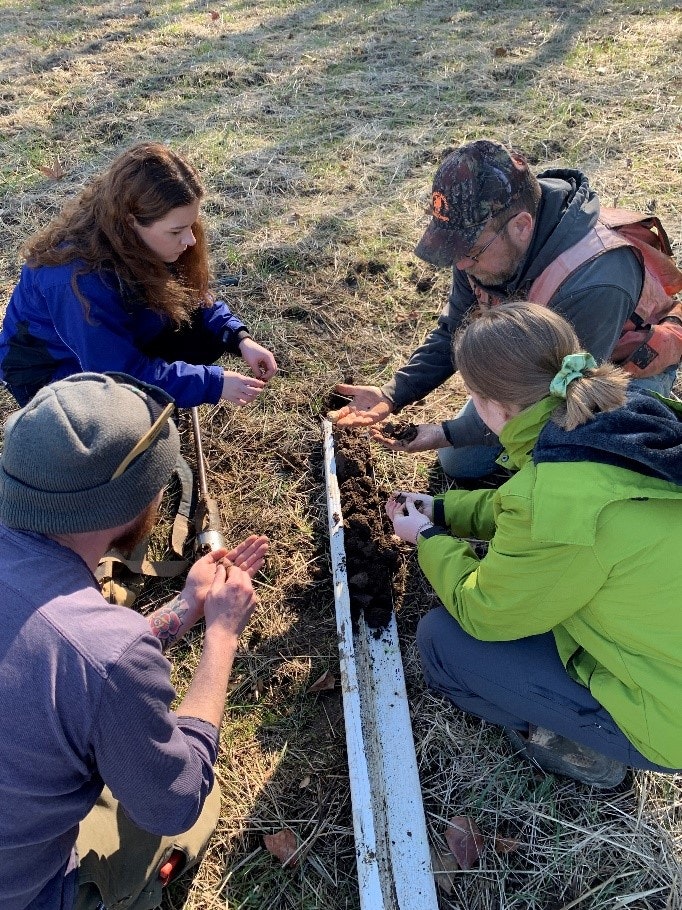The Dirt | Building Soil-Minded Community
By Teresa Matteson, Resource Conservationist
From 2021 to 2023, we worked with 12 farmers to collect soil health assessments from 30 fields and shared results during follow-up meetings. To begin, we hosted one-on-one interviews with 18 stakeholders to determine the interest in and awareness of soil health issues in Benton County. According to the interviews, many Benton County farmers:
- Belong to multigenerational farm families. They want to improve the soil for next generations, a.k.a. build soil capital.
- Appreciate the importance of soil in their operations. Some may be interested in improving soil health. Some may be interested in soil health tests and their soil’s organic matter levels.
- Already implement practices that improve soil health, such as production of perennial crops that sequester carbon and reduce soil disturbance, e.g. hazelnuts, tall fescue.
- Have personal experience that indicates perennial crops systems actually improve soil health. For example, a three-to-seven-year tall fescue field rotated to another crop will have higher than expected yields due to reduced soil disturbance and other management practices.
- May be hesitant to try cover crops due to pressure from voles and slugs, and due to cover crop planting and termination timing relative to soil moisture and cash crop management.
- Abide by fertilizer recommendations. Fertilizer is expensive and may be in short supply.
- May or may not understand how improving soil health might help address groundwater nitrate levels.
- Are interested in telling the story of soil health and how Willamette Valley farms help the soil, environment, and community.
BSWCD hosted three events that highlighted this project and soil health topics: a Strip Till Field Day; a soil health project presentation during the NRCS Local Work Group meeting; and the first Benton County Ag Soil Health Meeting in Monroe. The 35 people attending this meeting included 14 farmers and 2 crop advisers. USDA Ag Research Service, NRCS, and OSU Extension gave four presentations related to carbon sequestration, greenhouse gas emissions, aerial imaging of vole impacts, and a rainfall demonstration that showed erosion and infiltration related to managing for soil health.
Five interns helped with field work: four OSU students and one non-student.
We attribute successful farmer recruitment to years of dedicated outreach and a presence in the agricultural community that has helped us develop the trust and mutual respect that leads to collaboration.

